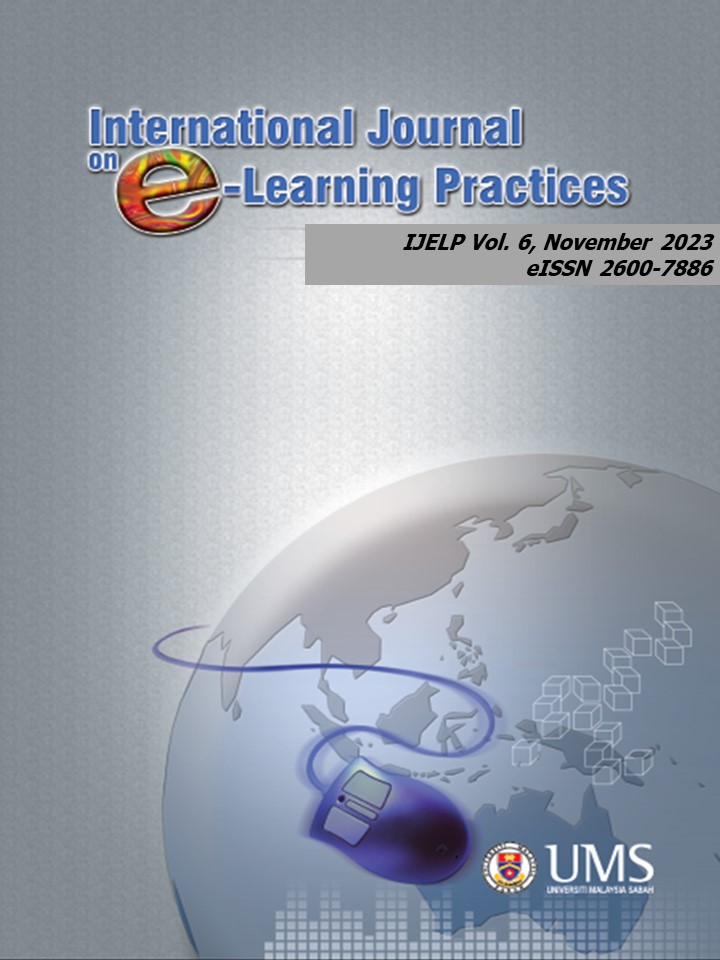The Employment of Multimedia Elements in Classroom Teaching Among TESL Teacher-Trainees in Universitiy Malaysia Sabah
DOI:
https://doi.org/10.51200/ijelp.v6i1.4611Keywords:
multimedia, integration of multimedia, TESL, TESL teacher-traineesAbstract
The employment of multimedia in classroom teaching has pushed education into one step higher from the conventional approach teaching method to more participatory and exciting teaching and learning process. The purpose of this research is to explore the degree to which multimedia is used in classroom instruction among TESL teacher-trainees during the practical teaching. A total of 37 respondents comprising of fourth year TESL teacher-trainees from University Malaysia Sabah participated. This study also aims to find out whether or not the TESL teacher-trainees integrate multimedia in classroom teaching and if they do, the study aims to identify the multimedia elements they frequently use and if not, the study wants to find out the reasons for not integrating multimedia in their classroom teaching. As a result, it was observed that even among those that integrate multimedia, there are limitation to using multimedia in the classroom activity. Furthermore, the advantages stemming from the integration of multimedia have also been discovered. The result of the data analysis revealed three major findings namely the forms of multimedia incorporated in classroom teaching by TESL teacher-trainees, the benefits of the integrating multimedia in the classroom and the limitations. Based on the results, numerous discussions and suggestions are formed in order to enhance the incorporation of multimedia in classroom education
References
Abdullah, S., Hartharan, N. K., & Ibrahim, A. (1997). Multimedia in the classroom: Reality or fantasy. The English Teacher.
Al Aqad, M. H., Al-Saggaf, M. A., & Muthmainnah, M. (2021). The Impact of Audio-Visual Aids on learning English among MSU Third-Year Students. ENGLISH FRANCA: Academic Journal of English Language and Education, 5(2), 201-214.
Almara'beh, H., Amer, E. F., & Sulieman, A. (2015). The effectiveness of multimedia learning tools in education. International Journal, 5(12), 761-764.
Amine, B. M., Benachaiba, C., & Guemide, B. (2012). Using Multimedia to Motivate Students in EFL Classrooms: A Case Study of English Master's Students at Jijel University, Algeria. Malaysian Journal of Distance Education, 14(2).
Aminuddin Baki, I. (2017). Diterbitkan Oleh. https://ssmstekvok.files.wordpress.com/2017/05/pak21.pdf
Casteleyn, J., Mottart, A., & Valcke, M. (2013). The impact of graphic organisers on learning from presentations. Technology, Pedagogy and Education, 22(3), 283-301.
Cotton, K. (2008). Computer‐assisted instruction. Encyclopedia of Special Education, 514-
Edwin, K. (2019). Reliability and Validity of Research Instruments. In NMK conference (pp. 1-9).
Gilakjani, A. P. (2012). A study on the impact of using multimedia to improve the quality of English language teaching. Journal of Language Teaching & Research, 3(6).
Golafshani, N. (2003) ‘Understanding Reliability and Validity in Qualitative Research’, The Qualitative Report, 8(4), pp. 597–607.
Ilhan, G. O., & Oruc, S. (2016). Effect of the Use of Multimedia on Students' Performance: A Case Study of Social Studies Class. Educational Research and Reviews, 11(8), 877-882.
Mohajan, H. K. (2018). Qualitative research methodology in social sciences and related subjects. Journal of economic development, environment and people, 7(1), 23-48.
Mohamad, M. M. et al. (2015) ‘Measuring the Validity and Reliability of Research Instruments’, Procedia – Social and Behavioral Sciences. Elsevier, 204, pp. 164–171. doi: 10.1016/j.sbspro.2015.08.129.
Neo, T. K., & Neo, M. (2004). Integrating Multimedia into the Malaysian Classroom: Engaging Students in Interactive Learning. Turkish Online Journal of Educational Technology-TOJET, 3(3), 31-37.
Onah, D. O., & Nzewi, U. M. Examining Barriers to Multimedia Integration in Teaching and Learning of Science.
Osman, G., & Oruç, Ş. (2016). Educational Research and Reviews Effect of the use of multimedia on students’ performance: A case study of social studies class. 11(8), 877–882. https://doi.org/10.5897/ERR2016.2741
Puteh, F., & Shukor, S. S. (2010). The Integration of Multimedia Elements in Classroom Teaching Among TESL Teacher-Trainees. The Integration of Multimedia Elements In Classroom Teaching Among TESL Teacher-Trainees, 1-6.
Yu, Z., Yu, L., Xu, Q., Xu, W., & Wu, P. (2022). Effects of mobile learning technologies and social media tools on student engagement and learning outcomes of English learning. Technology, Pedagogy and Education, 31(3), 381-398.
Zhan, Y., & So, W. W. M. (2017). Views and practices from the chalkface: Development of a formative assessment multimedia learning environment. Technology, Pedagogy and Education, 26(4), 501-515.






